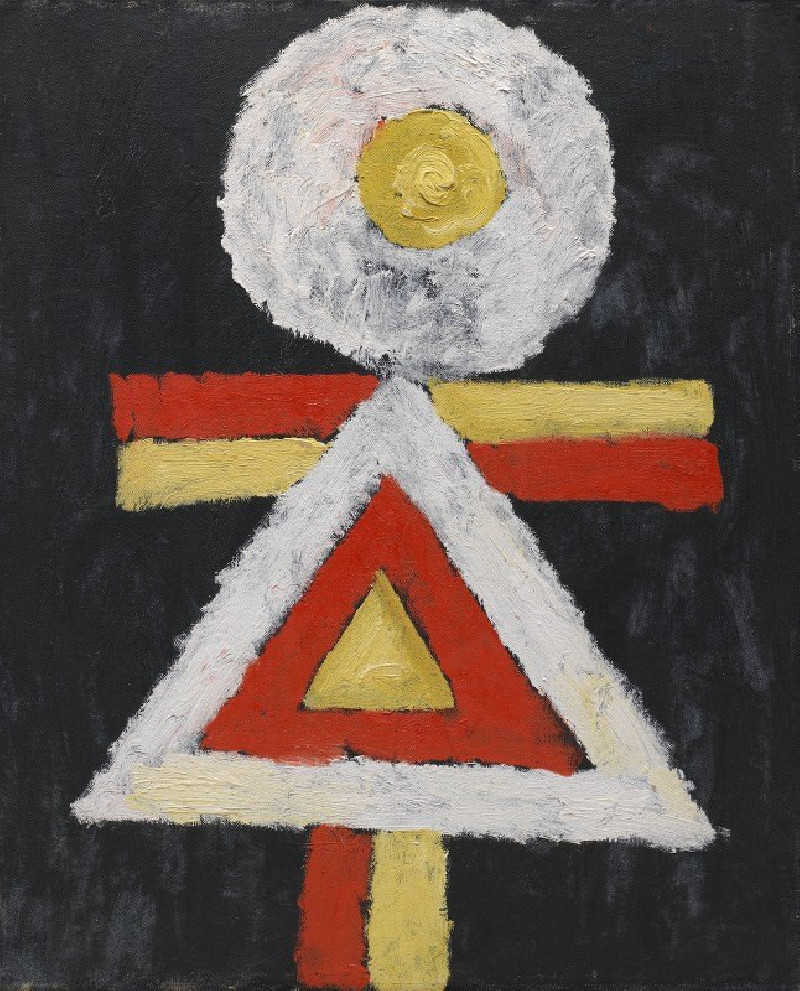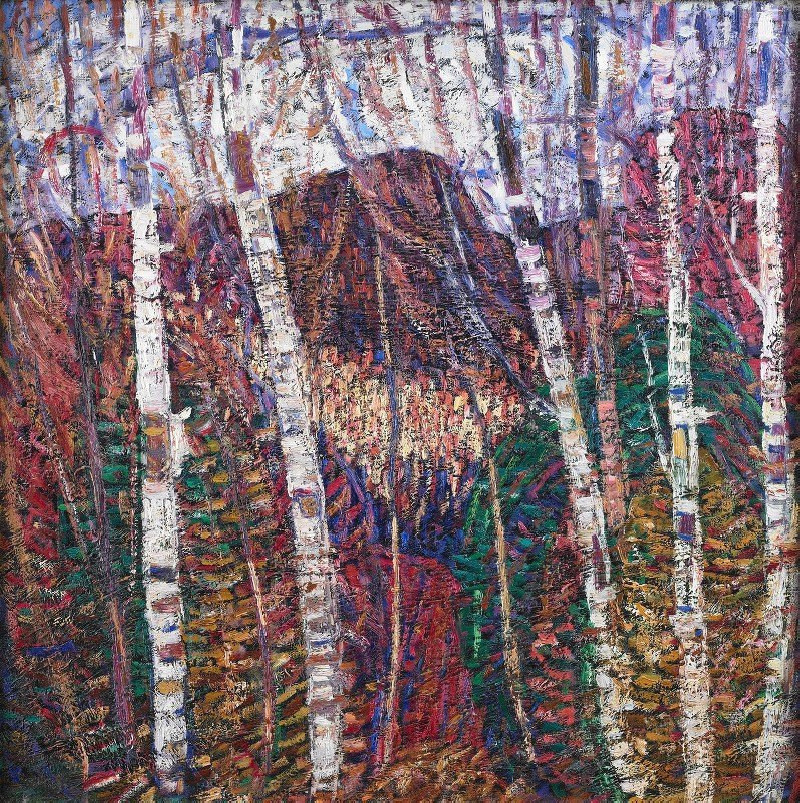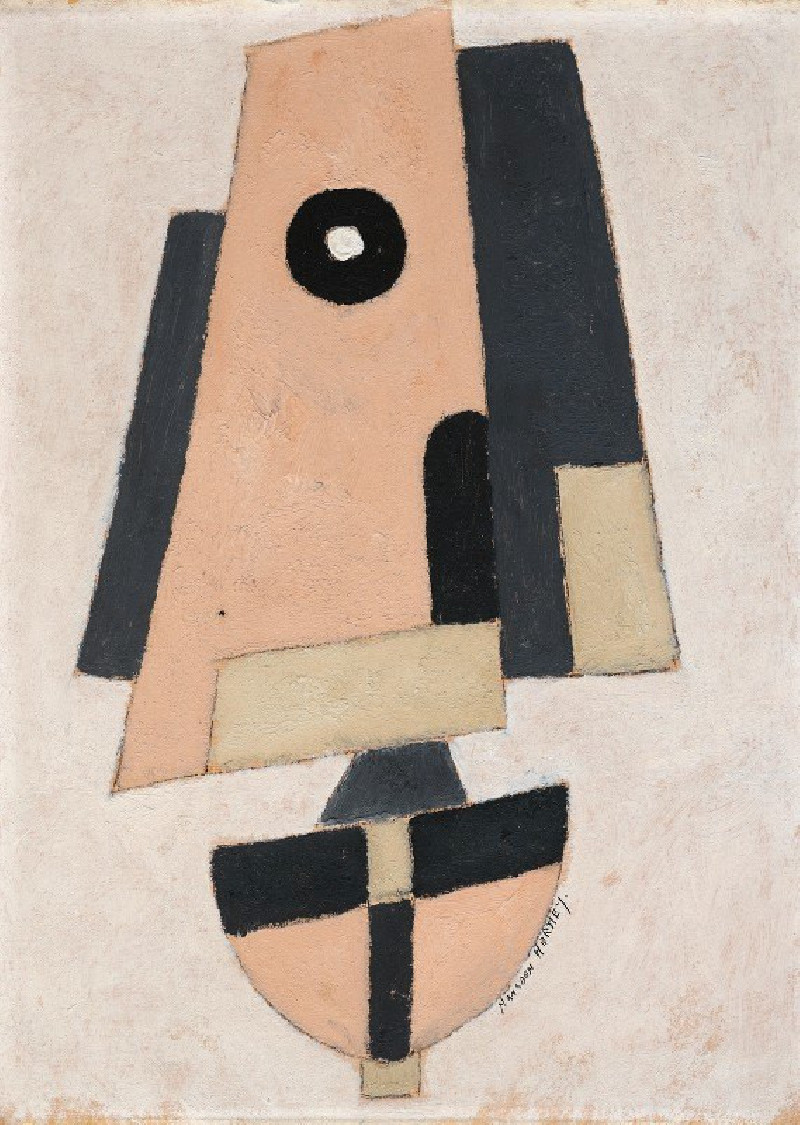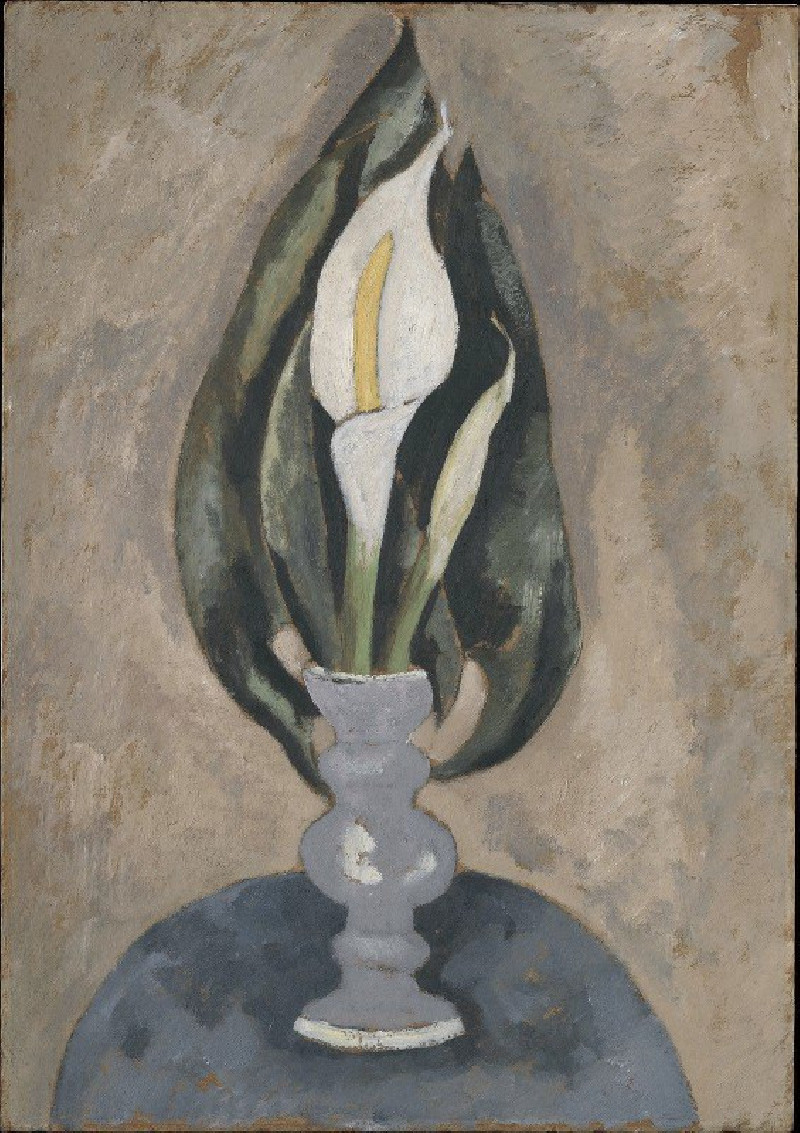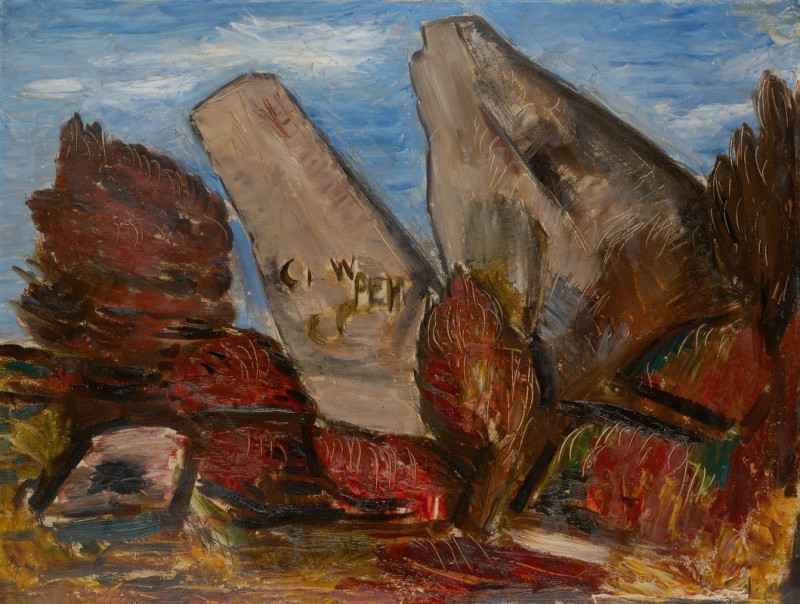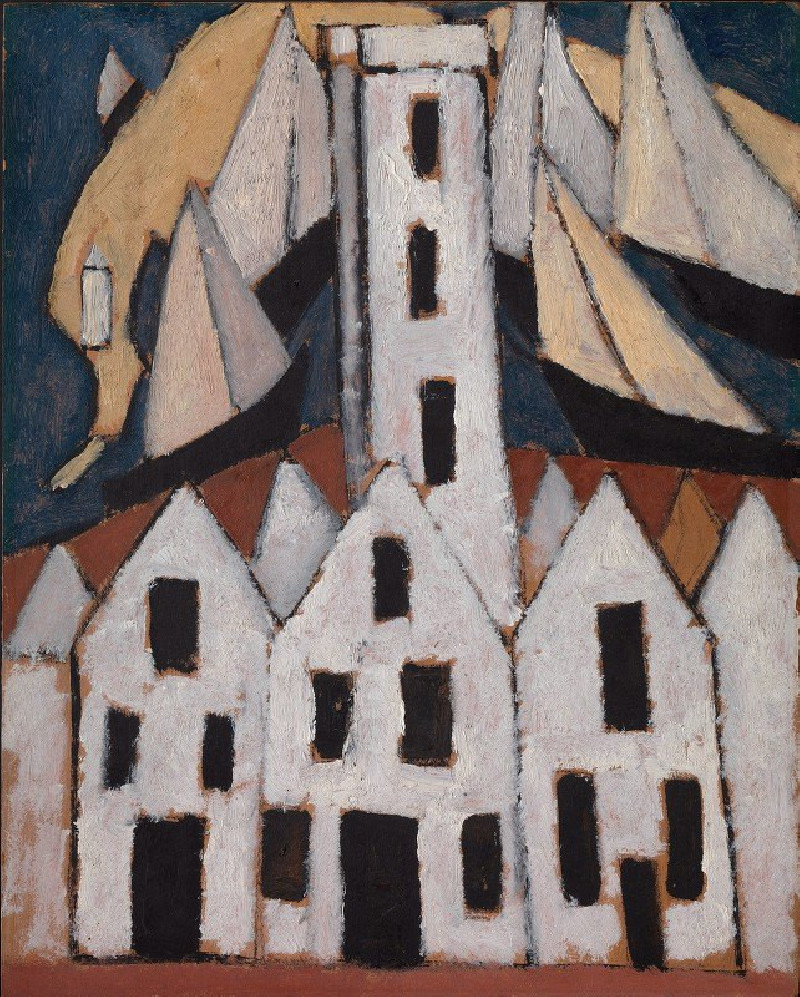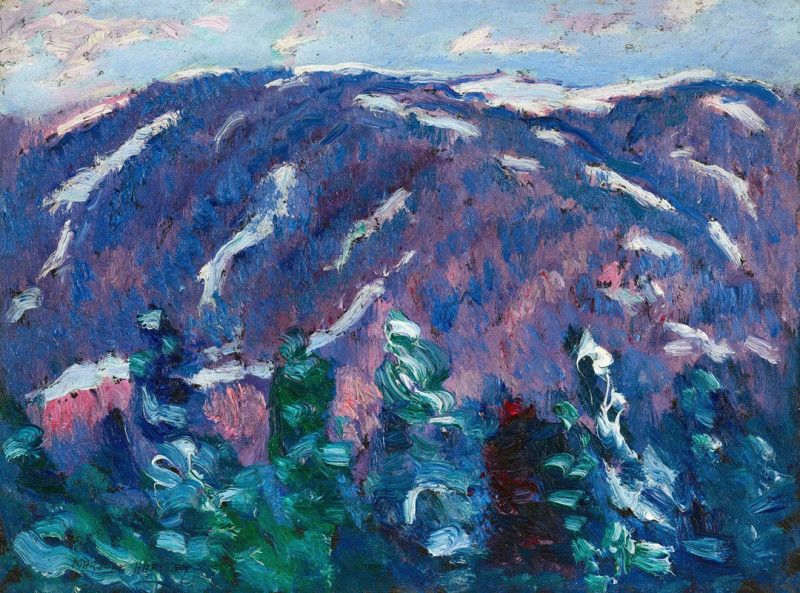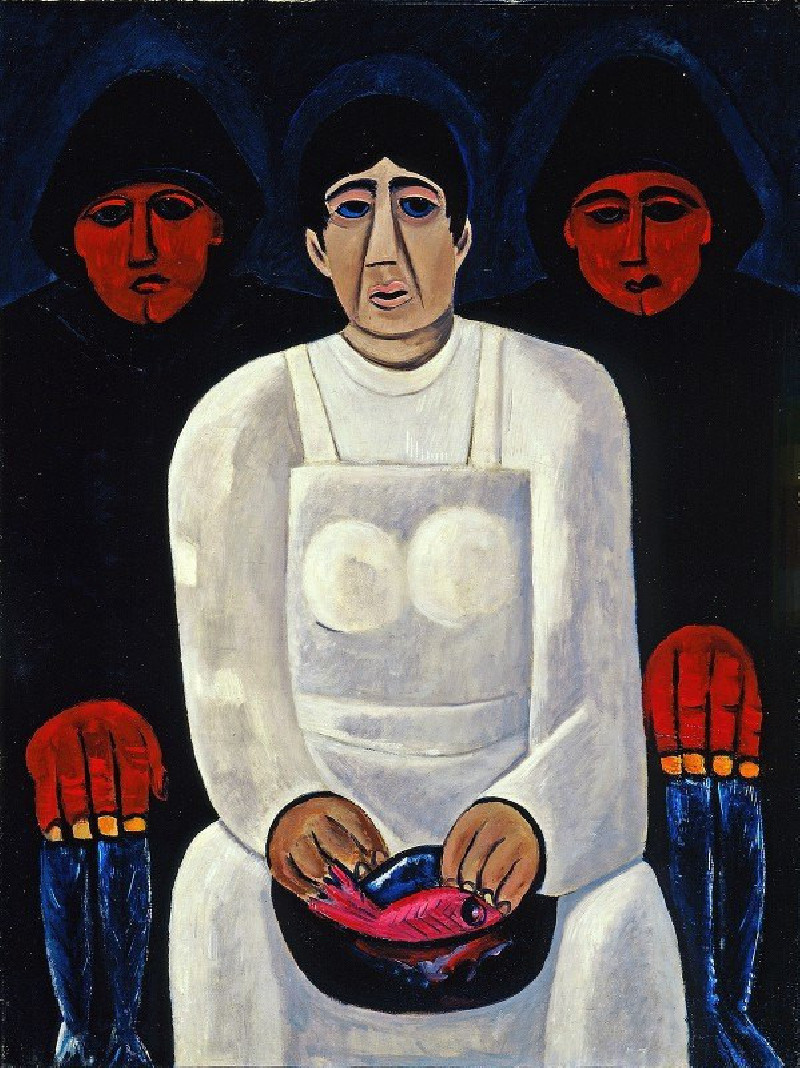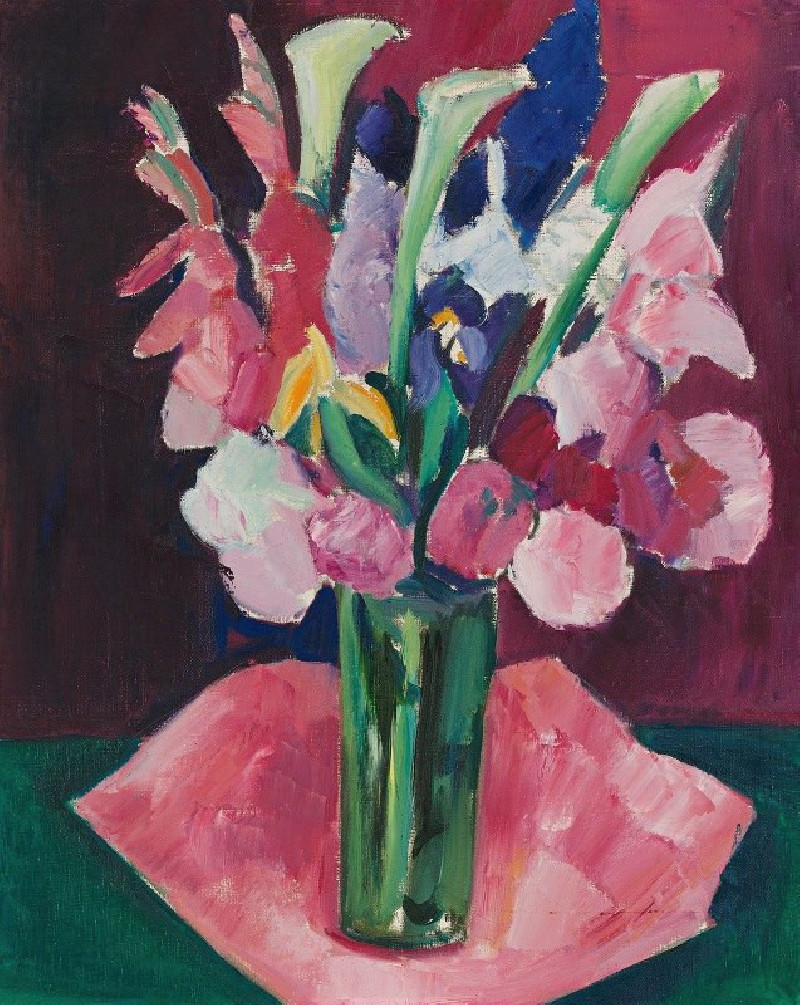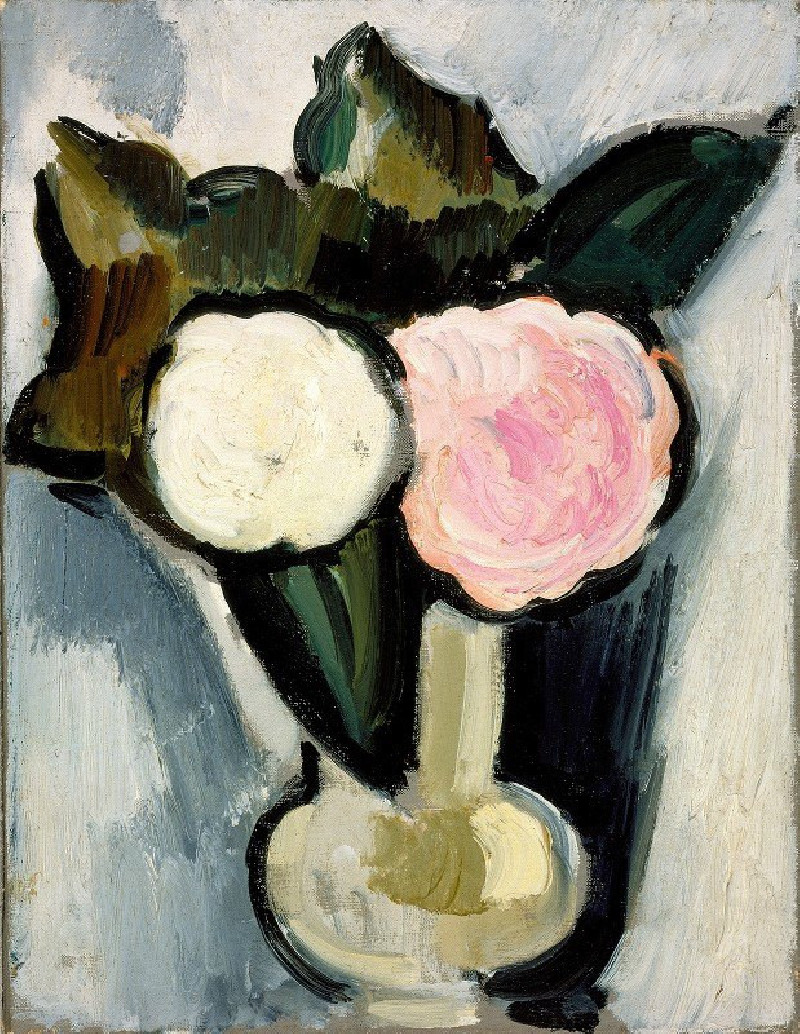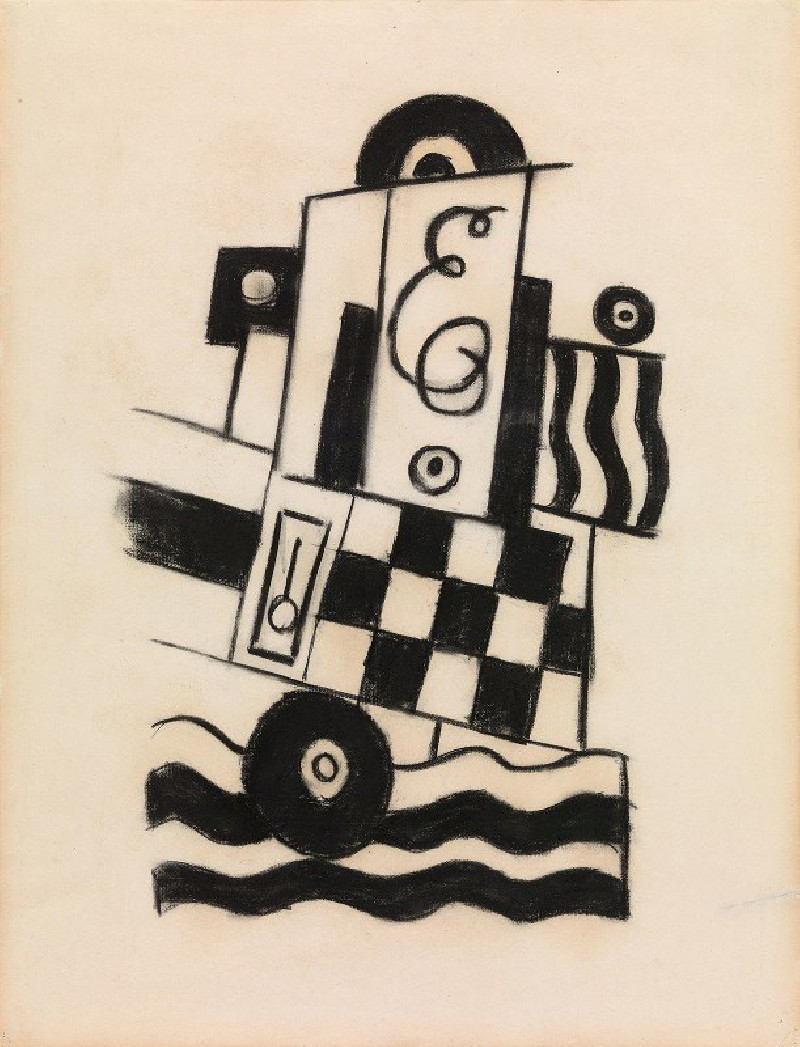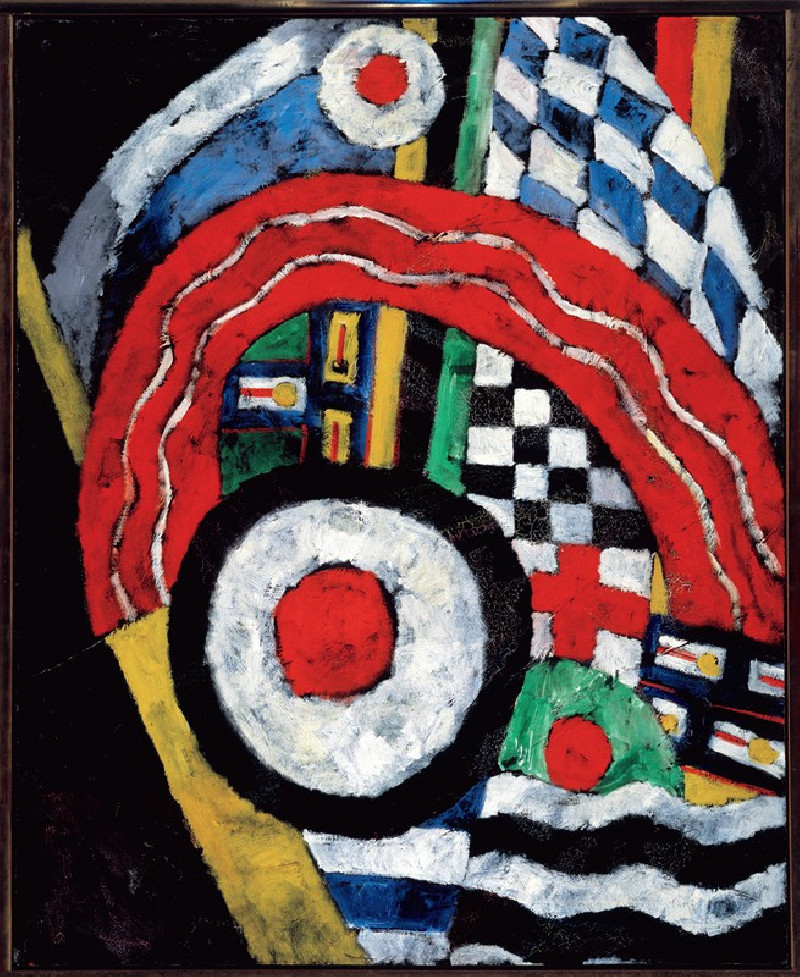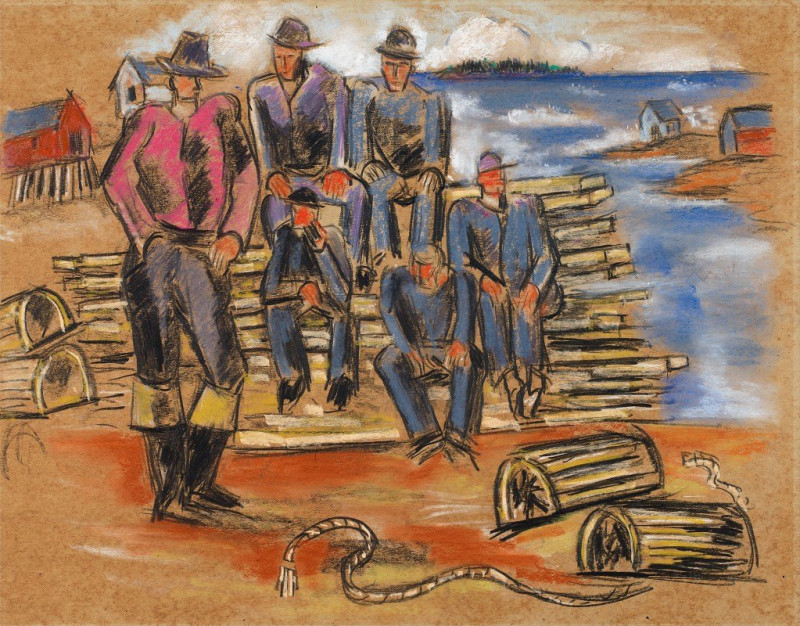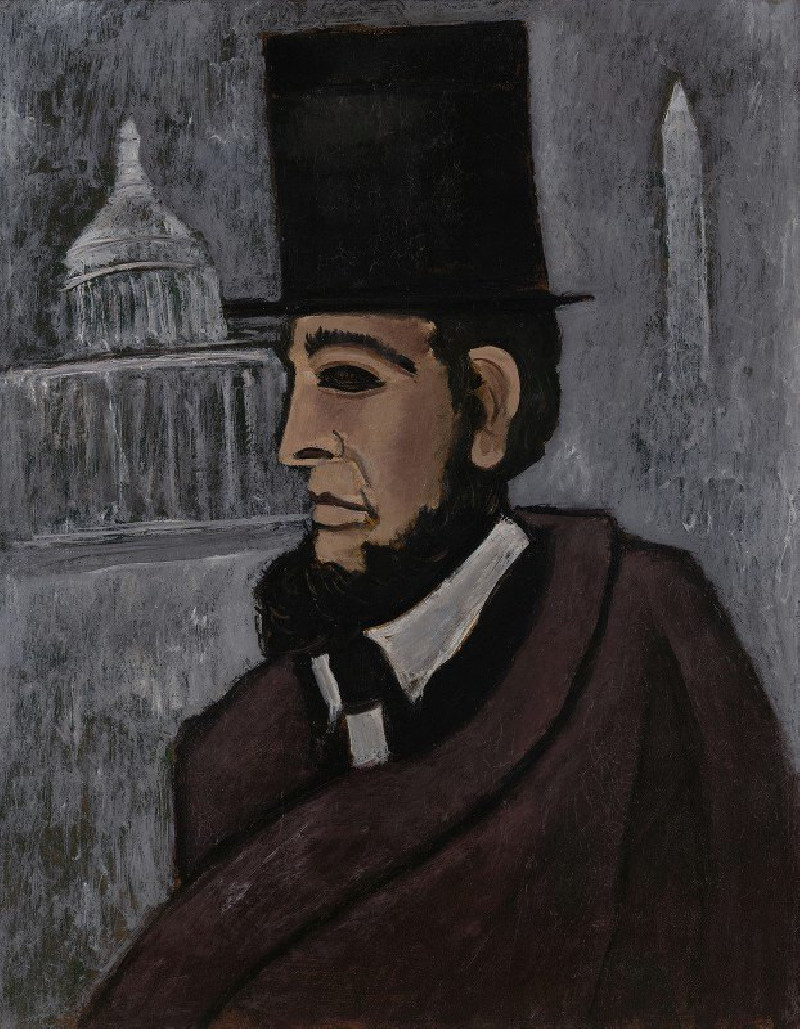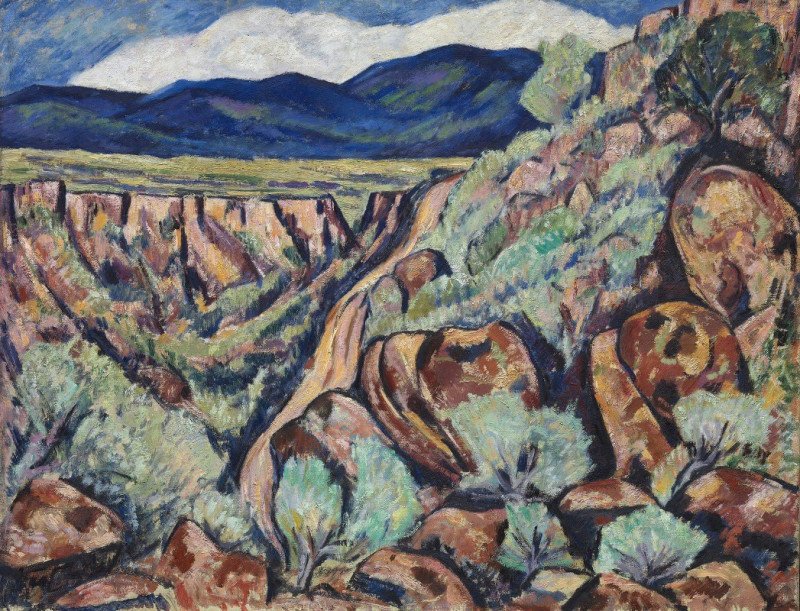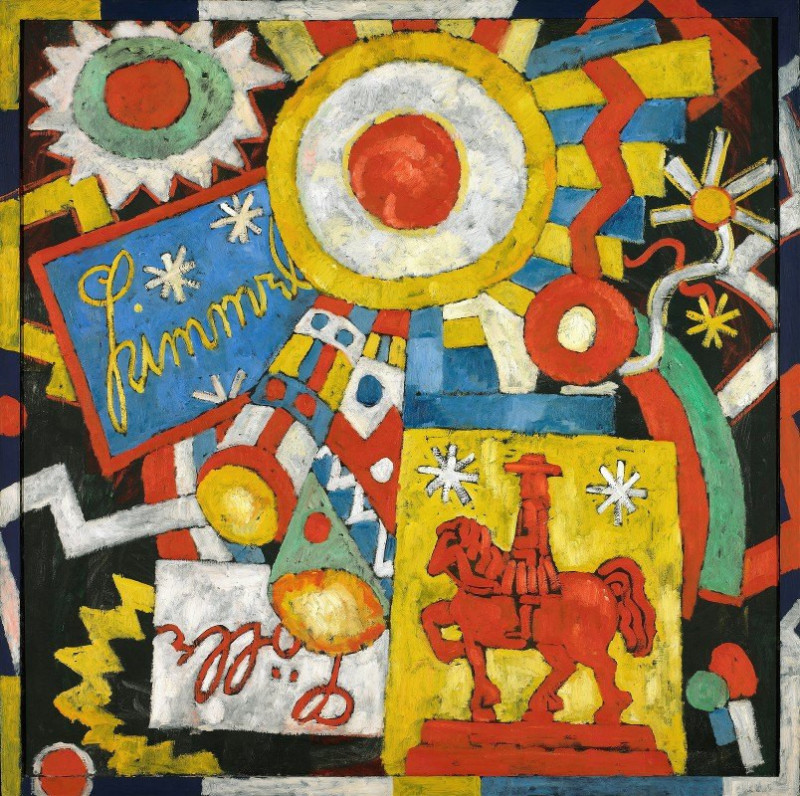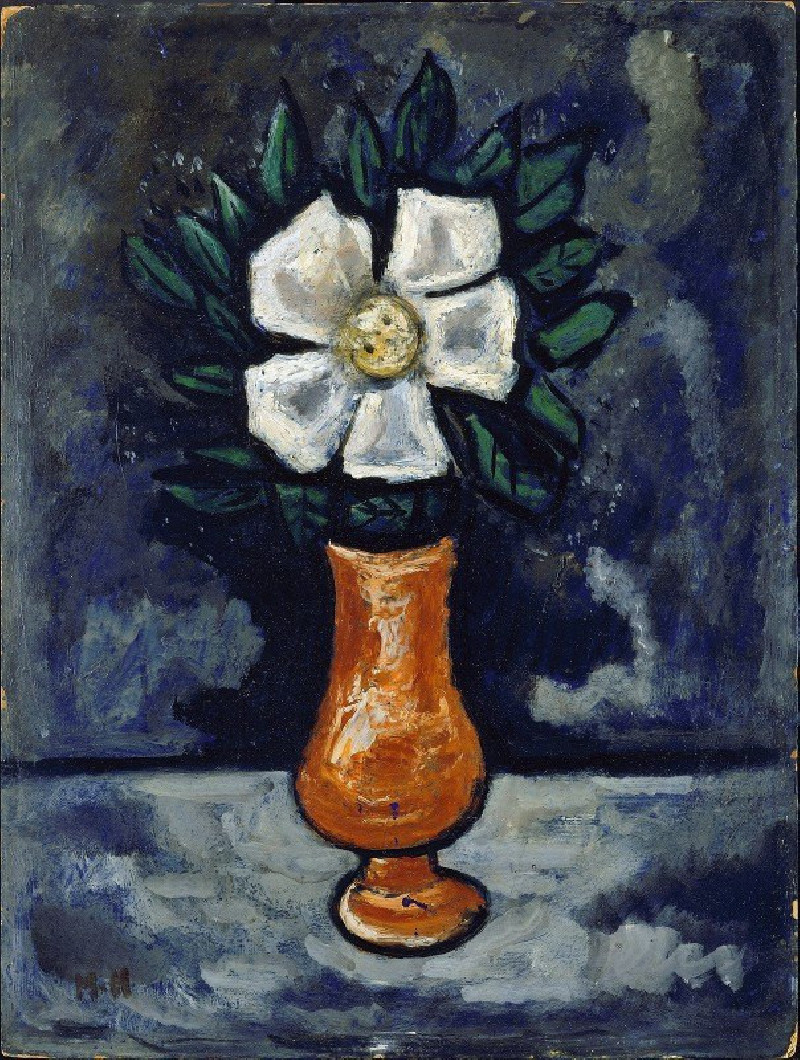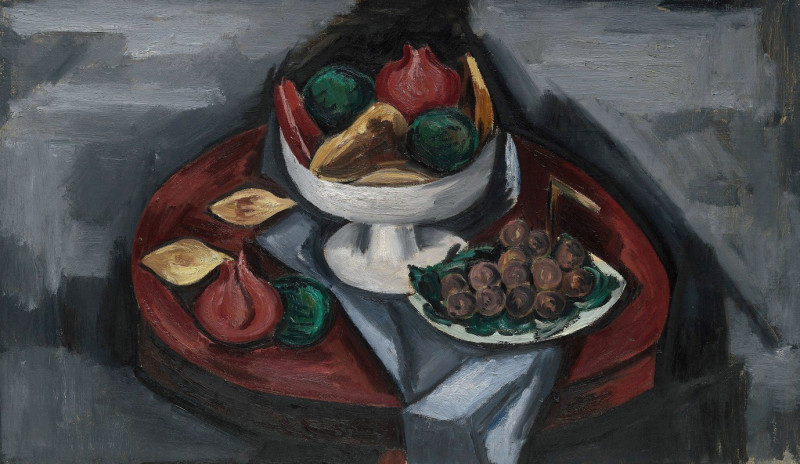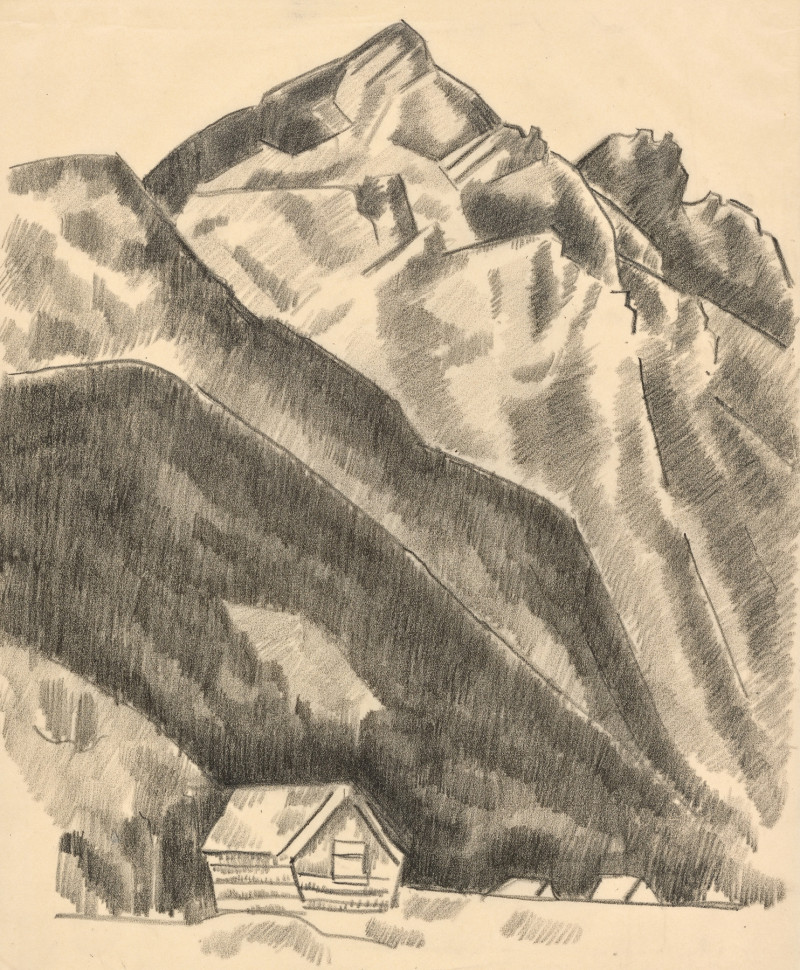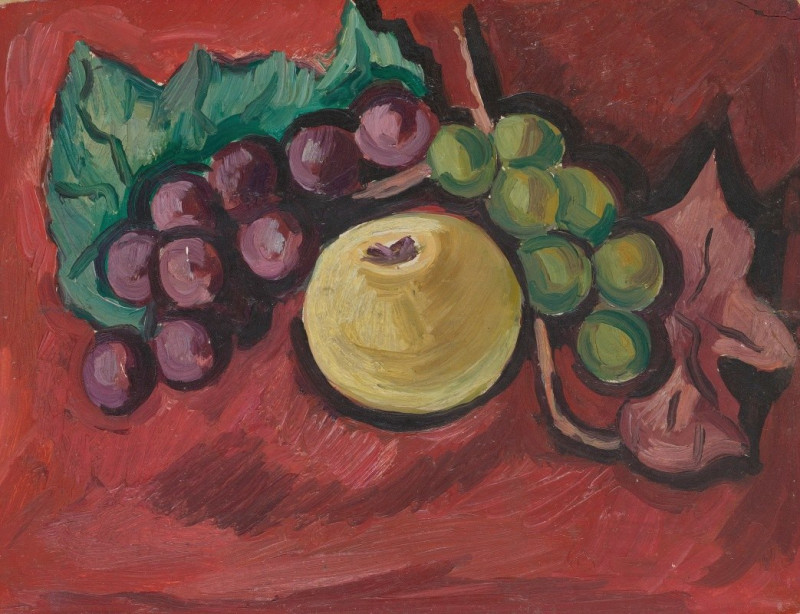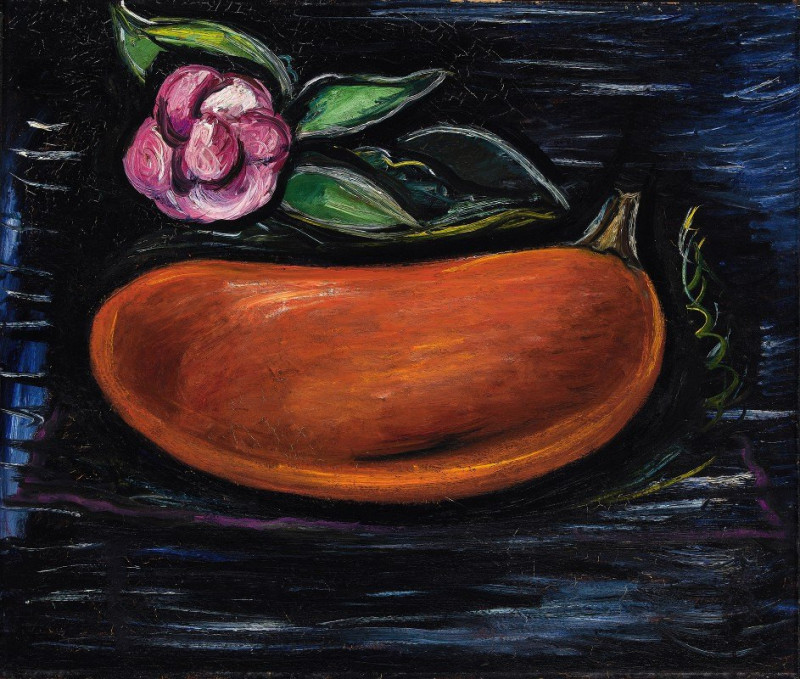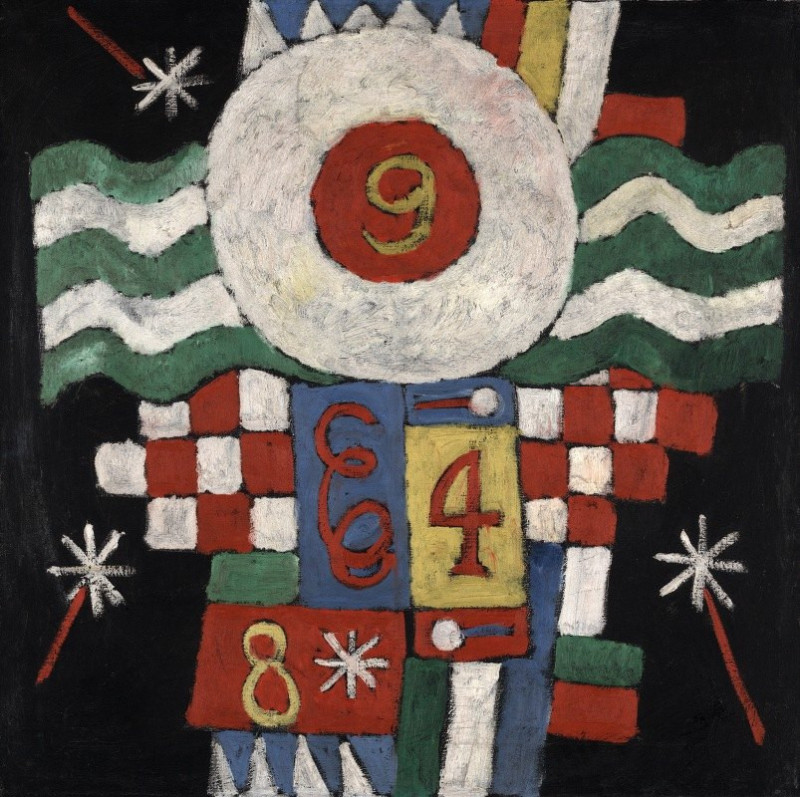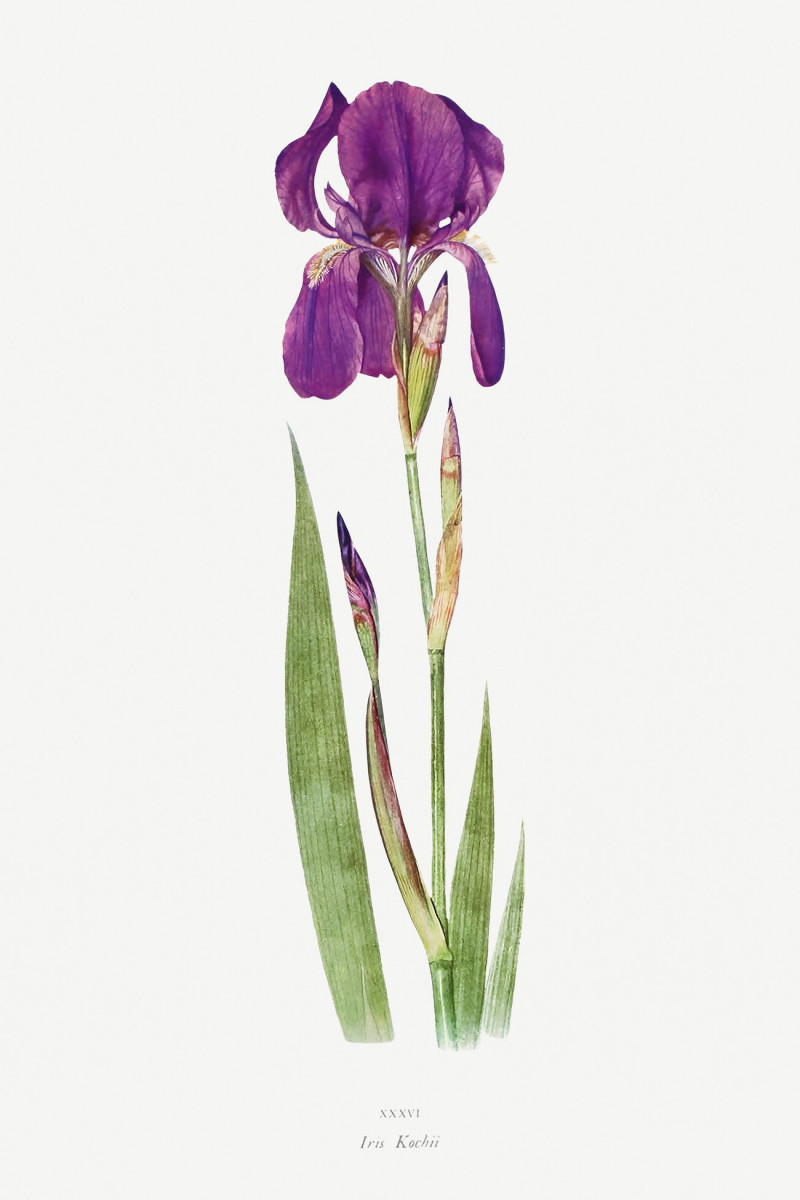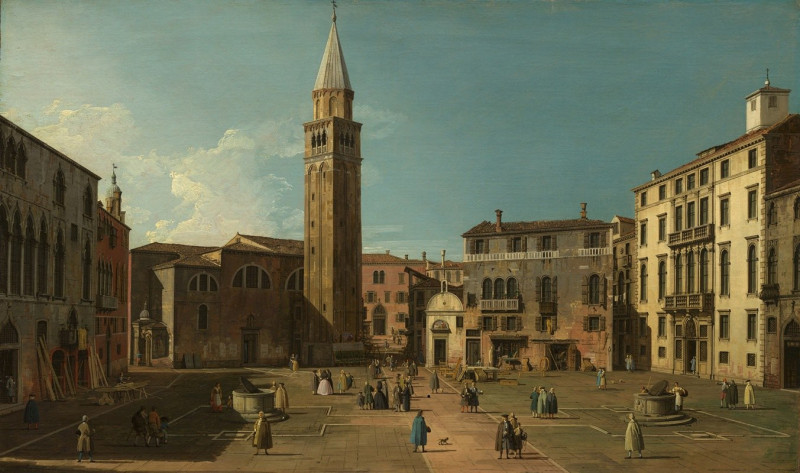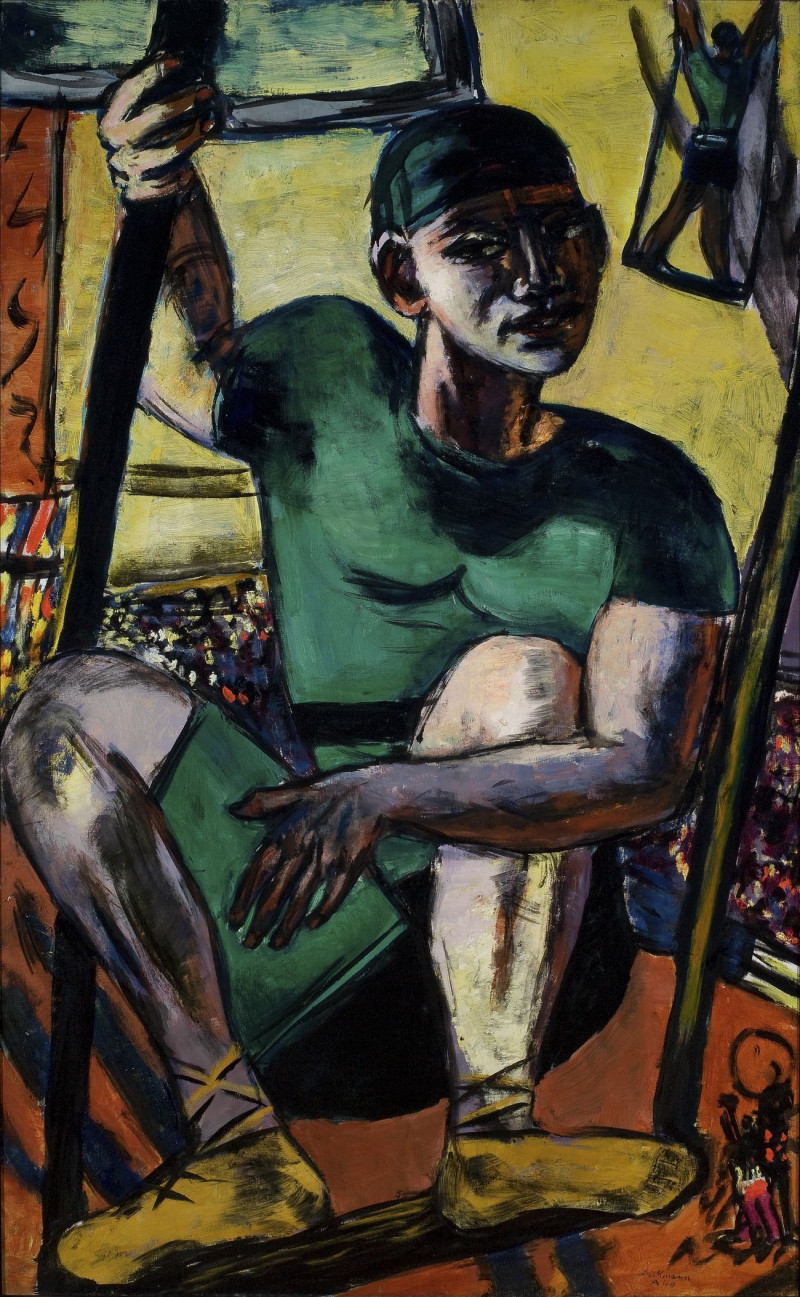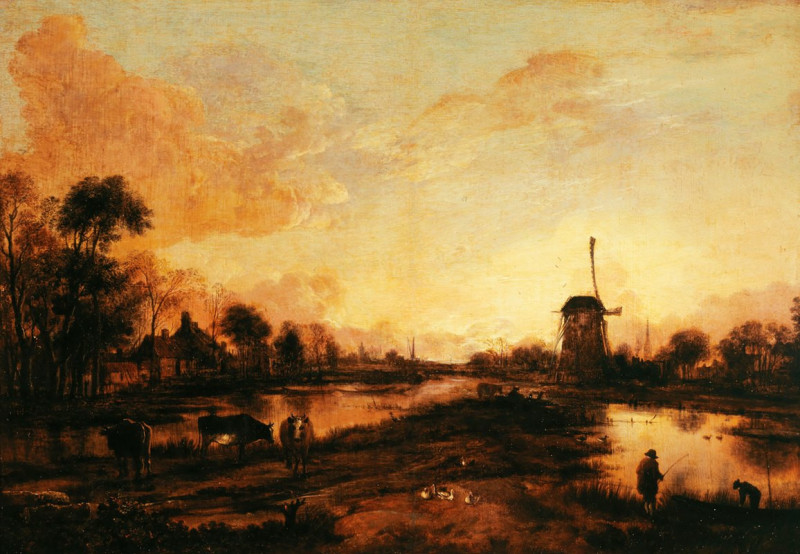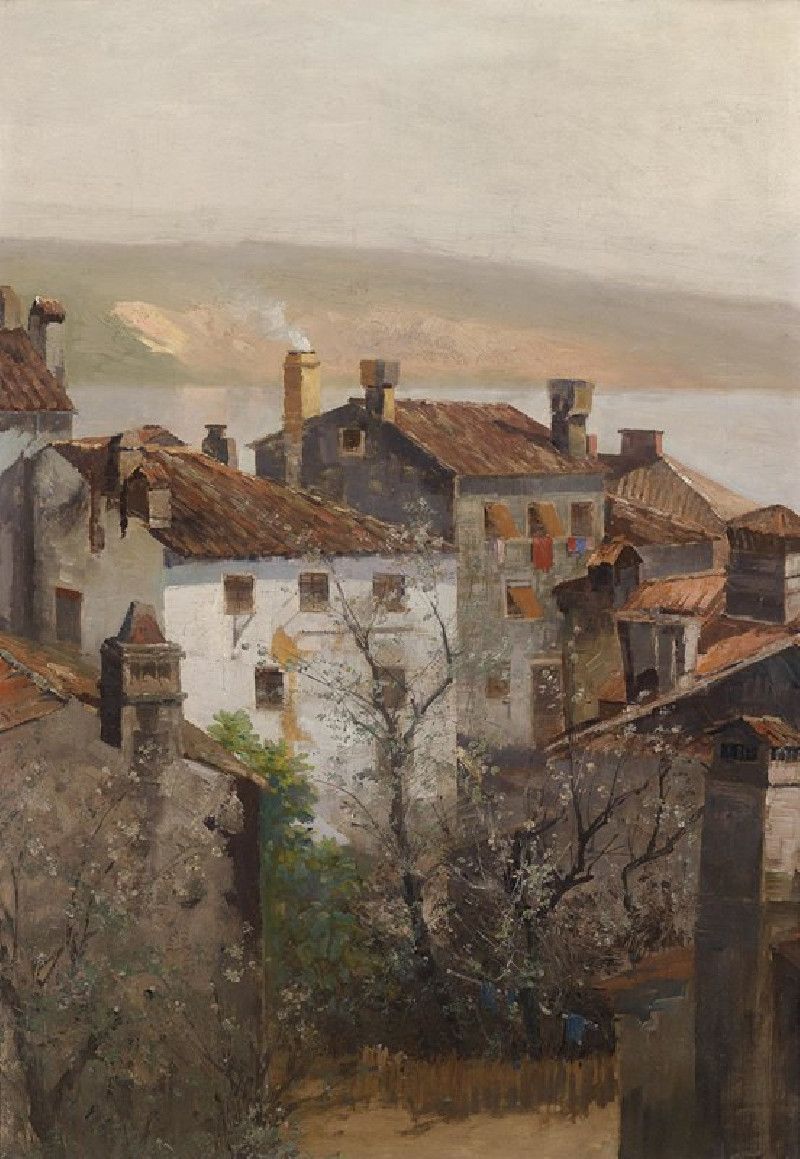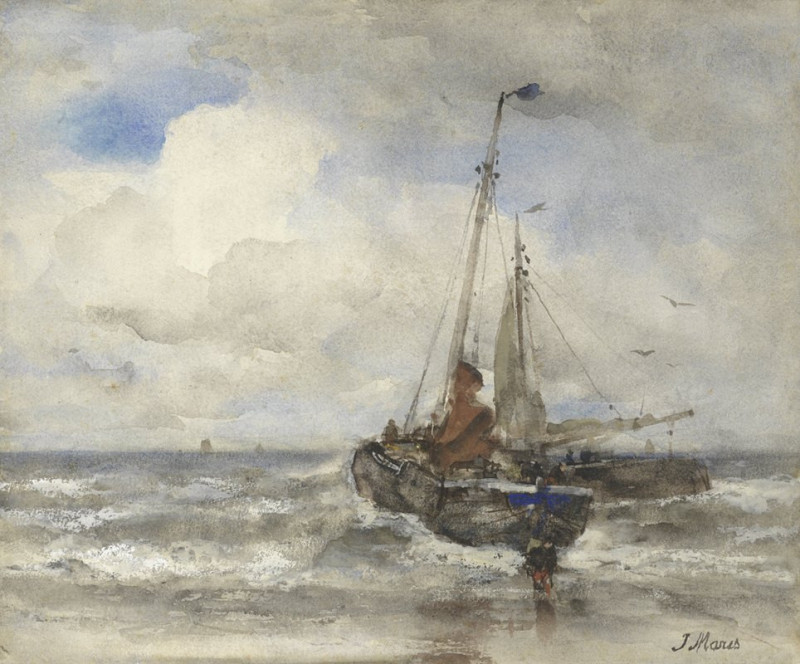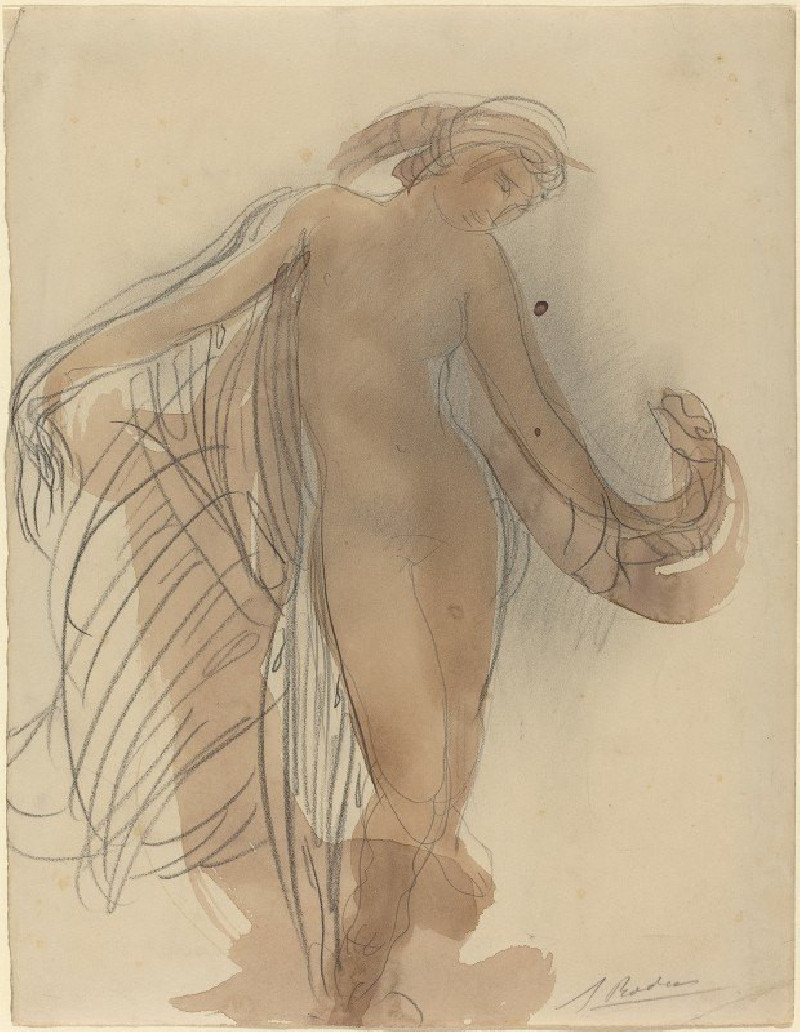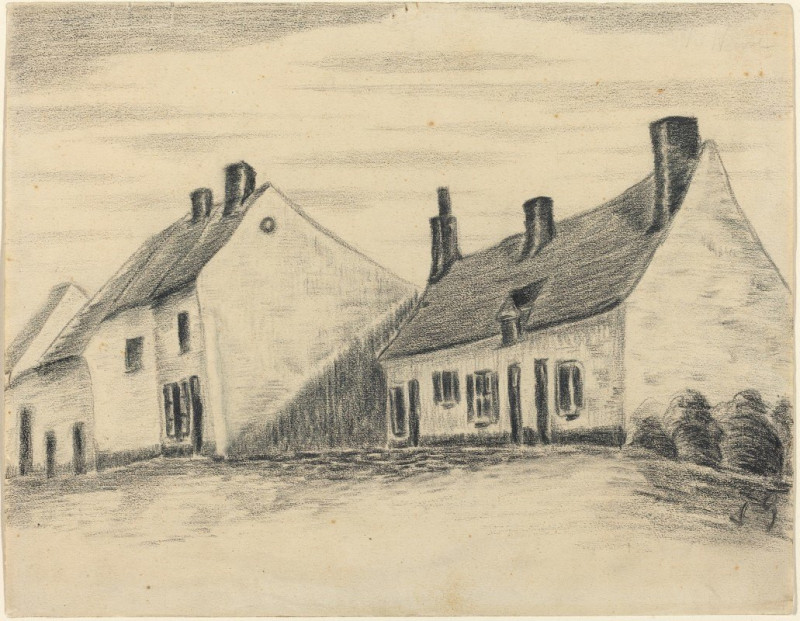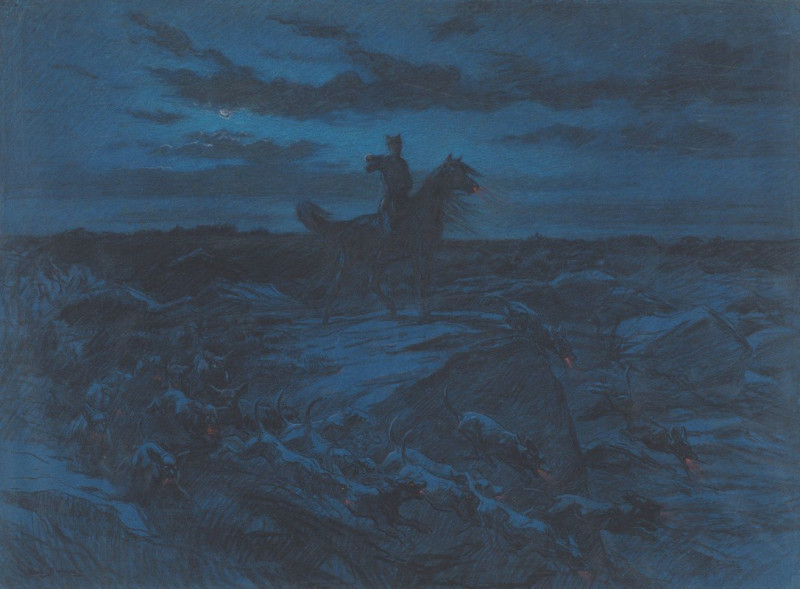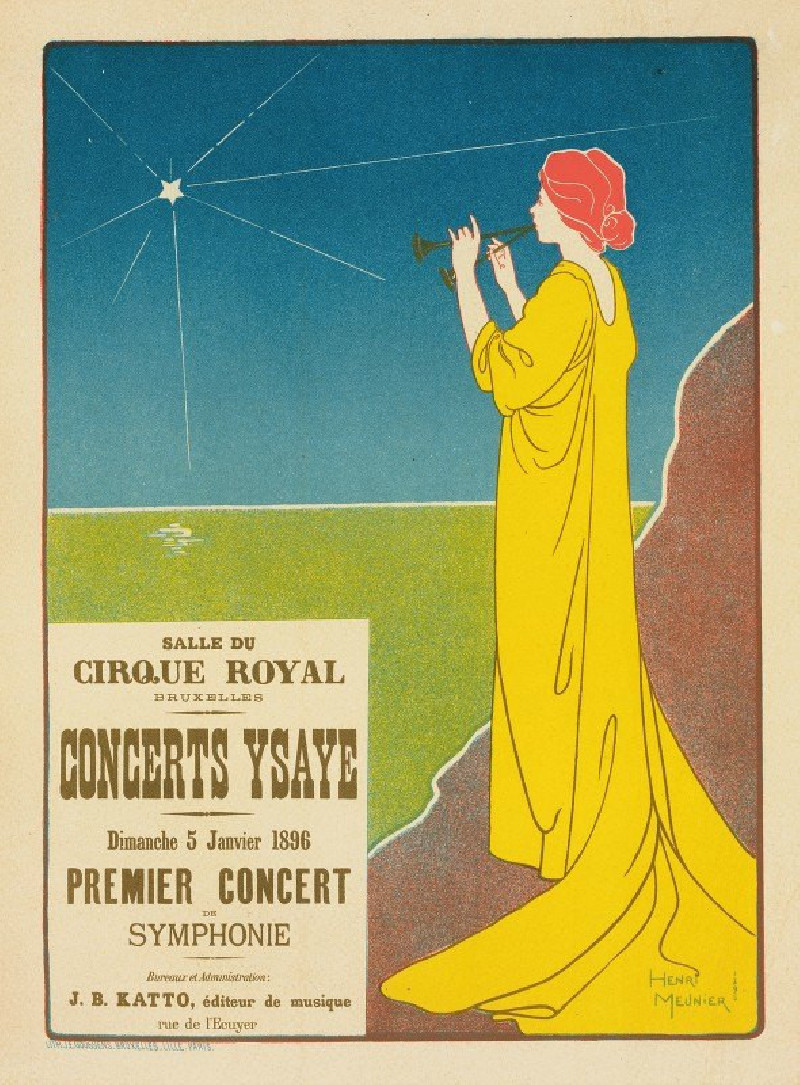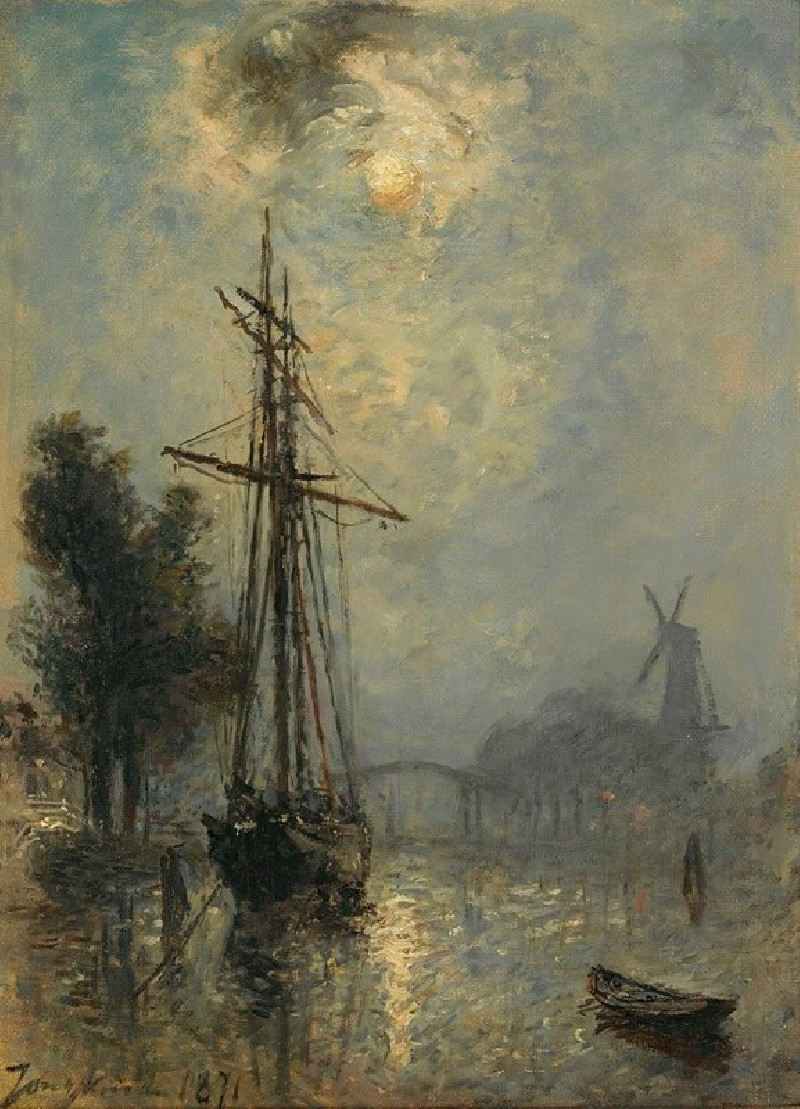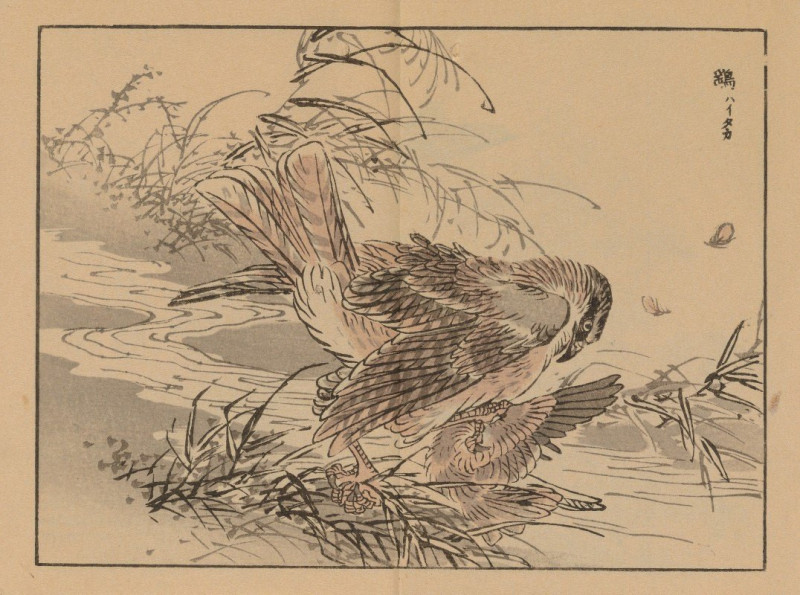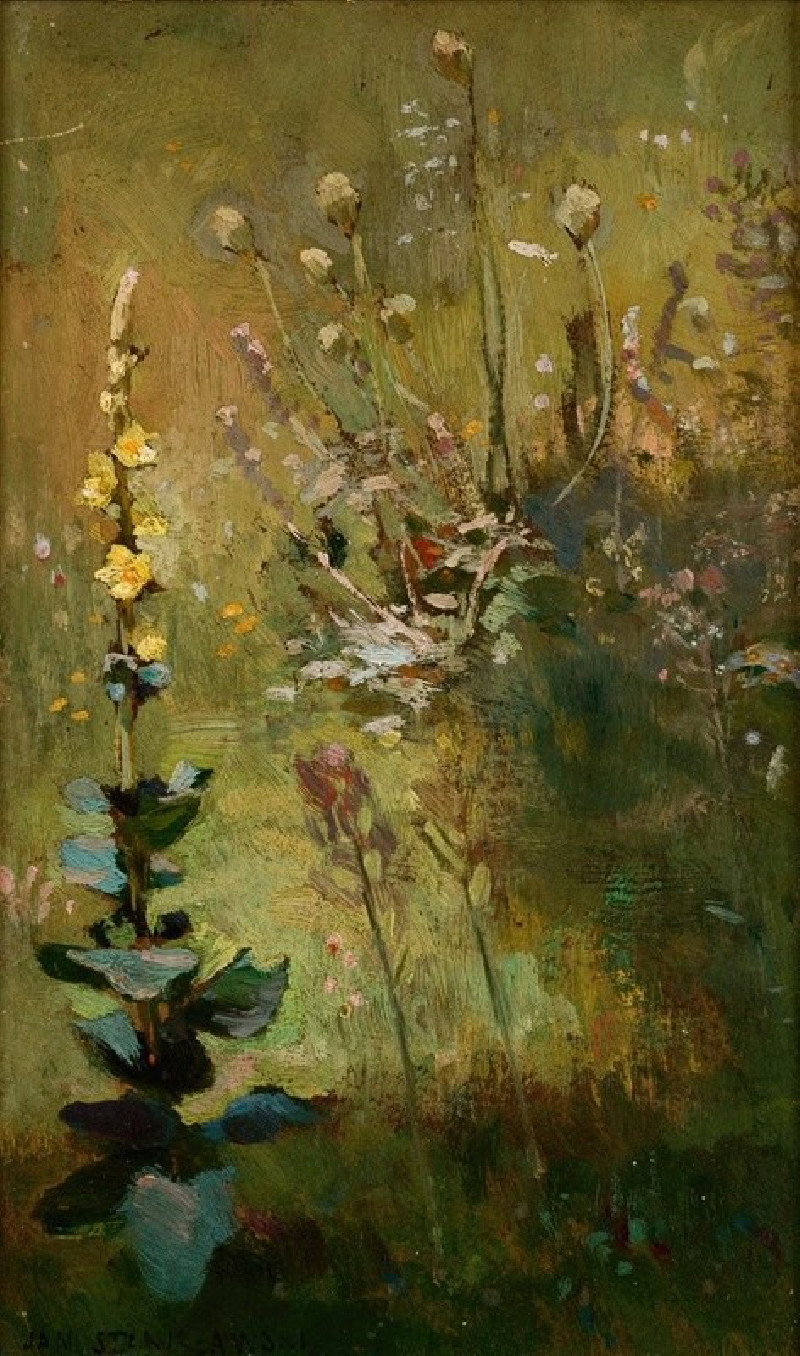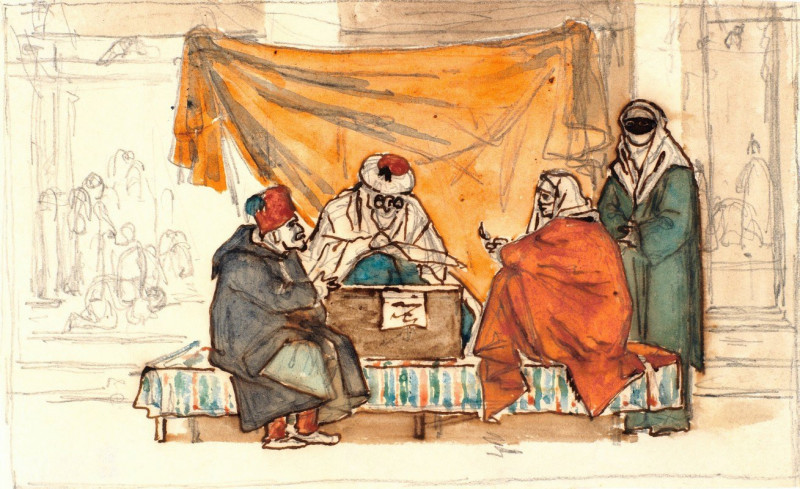Geometric Figure (1889 – 1943)
Technique: Giclée quality print
Recommended by our customers
More about this artwork
Marsden Hartley's "Geometric Figure (1889 – 1943)" is a striking example of his unique approach to modernist painting, blending abstract elements with symbolic meaning. This painting showcases a central geometric form resembling a humanoid figure, composed of simple shapes and bold colors against a contrasting black background.The painting features a large white circle with a textured surface at the top, possibly symbolizing a head or a celestial body. This circle contains a smaller yellow circle at its center. A broad red triangle with a yellow triangle nestled within it forms the torso, conveying a sense of layered depth and intrigue. Extending from the sides of the triangle are two horizontal bands in yellow and red, suggesting arms or a cross-bar balancing the figure.Hartley's use of primary colors and simple geometric shapes not only emphasizes the abstract qualities of the work but also hints at underlying themes or personal symbolism, a characteristic noted in much of Hartley's work. His use of thick impasto technique adds dimension and texture, making the figure almost leap off the canvas, while the stark black background enhances its visual impact."Geometric Figure" invites viewers to delve beyond its surface and explore the possible meanings embedded within its deceptively simple composition.
Delivery
Returns
Marsden Hartley (1877–1943) is a Maine native and a leading American Modernist painter, along with his contemporaries, Arthur Dove and Georgia O’Keeffe. He is well-known for employing geometric abstraction as well as bold colors and lines. His paintings depicted imagery of nature, landscapes, figures, and still-life. Sponsored by Alfred Stieglitz, Hartley went to Europe in 1912, spending most of his time in Germany, where he met Gertrude Stein, Wassily Kandinsky, and Franz Marc. After returning to America in 1930, he reconnected with the New England of his childhood and started to portray the landscapes of New England in his paintings.

